The evolution of second-hand market: From thrift to trend
The second-hand market is expected to reach $218 billion by 2027
If you have been clothes shopping the last decade this information might not be groundbreaking news to you, but second-hand clothing has been seeing an explosive increase in demand especially the last decade. However, the second-hand market is there much longer than just the last decade so here I am tracing back the history of charity shops, thrift stores and vintage collectors.
Pre-20th Century
In the pre-industrial era, clothing was a valuable and durable commodity. Unlike today’s fast fashion, garments were made to last, often hand-stitched and custom-made. As a result, second-hand clothing was commonplace, particularly in working-class communities where repurposing and handing down clothes were necessary. For example, during the 17th and 18th centuries in Europe, it was common for clothes to be passed down from the wealthy to their servants, and from there into the broader second-hand market or to family members. Owning new “first-hand” clothing at the time was really a rich sport.
The Industrial Revolution
The 19th century’s Industrial Revolution marked a turning point. Mass production made new clothes more accessible to the general public, but second-hand markets persisted. Charity bazaars, where the affluent donated their used clothes for resale, became popular in cities like London and Paris. London’s tradition to charity shops is holding strong till today, actually. These early versions of thrift stores catered mainly to the poor, but they were crucial in maintaining the culture of reuse.
The Great Depression & World Wars
The economic hardships of the Great Depression in the 1930s and the rationing during World War II further cemented the role of second-hand clothing. Thrift and mending became not just practical but patriotic. Clothing coupons and the Make Do and Mend campaign in the UK encouraged citizens to repair and recycle garments rather than buy new ones, fostering a culture of resourcefulness that would resonate for decades.
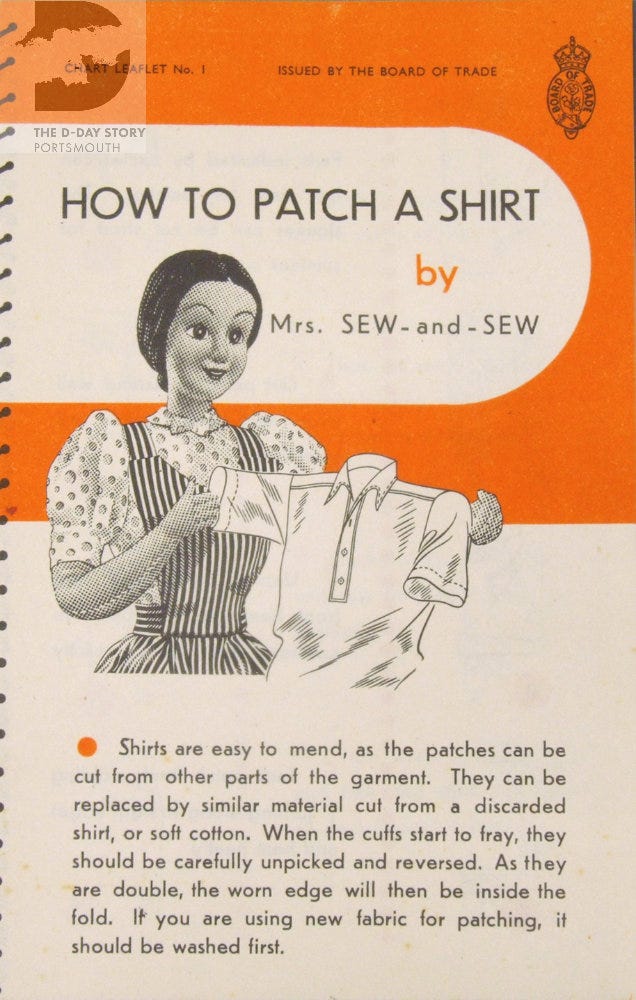

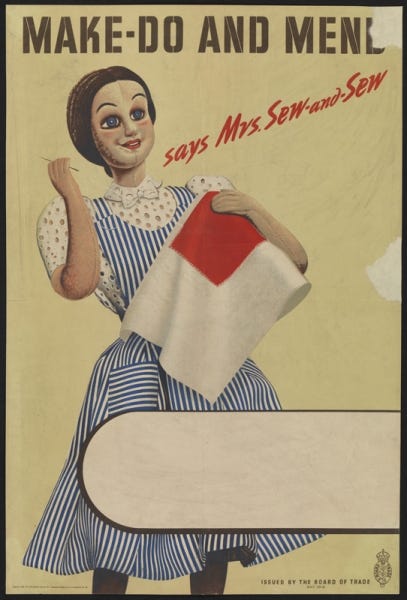
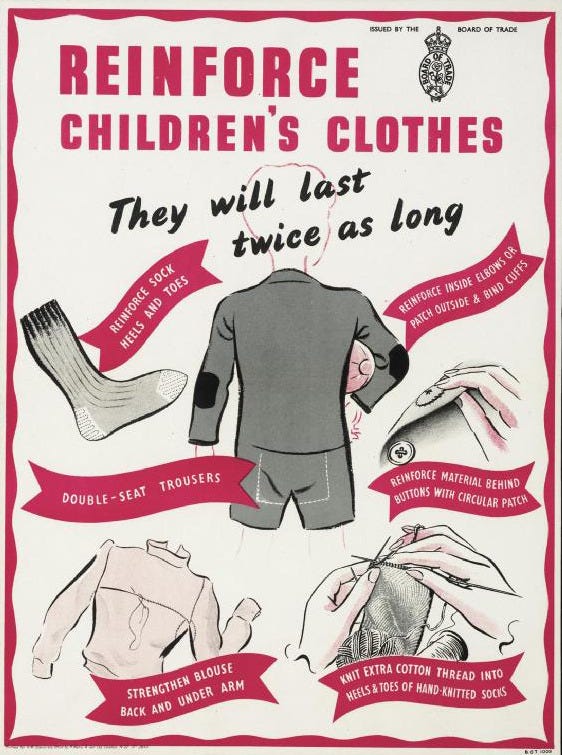
The Make Do and Mend campaign wasn’t just about practicality—it became a cultural phenomenon that shaped fashion during the war. The government produced a series of booklets that offered tips and creative ideas on how to repair and refresh old clothing. Basically, the UK government played the role of your Pinterest DIY board in some way. These guides included instructions on how to darn socks, patch holes, turn worn-out garments into new pieces, and even how to use parachute silk to make lingerie. How much I would love to have lingerie made of parachute silk. A fun fact is that my grandma was given a parachute by an Italian soldier during the World War II to make clothes out of it. I wish I had the clothes to show you but they never made it through wars and hardships I guess.
One particularly popular tip from the campaign was to “unpick and remake”—encouraging people to unpick seams of old garments and use the fabric to create something new. This often led to surprisingly stylish and innovative clothing, with women becoming highly skilled at reworking old dresses, men’s suits, and even military uniforms into new outfits. The campaign highlighted the resourcefulness of the public and contributed to the enduring British “stiff upper lip” attitude of making the best out of a challenging situation.
Moreover, the campaign’s emphasis on creativity and ingenuity in clothing repair resonated so much that it left a lasting legacy. Even after the war, the principles of “Make Do and Mend” continued to influence the way people thought about clothing, contributing to the early roots of what we now recognize as the sustainable fashion movement. I like to associate the great style inspiration that UK has always been and the abundance of amazing vintage stores, with the this heritage of theirs.
The Rise of Charity Shops
The mid-20th century saw the institutionalization of second-hand fashion through the establishment of charity shops like Goodwill and the Salvation Army in the United States. Goodwill Industries, founded in 1902, had a mission of providing employment and affordable goods to those in need, becoming a cornerstone of second-hand shopping . By the 1950s, these thrift shops had expanded significantly, serving not only the economically disadvantaged but also the frugal and fashion-conscious.
Cultural Shifts
The 1960s and 1970s brought significant cultural shifts that began to change the perception of second-hand clothing. The counterculture movement of the 1960s, with its emphasis on anti-consumerism and individual expression, embraced thrifted and vintage clothing as a way to stand out from the mainstream. This era saw the rise of vintage as a fashion statement, with people seeking out unique, one-of-a-kind items from previous decades. We can safely say that the 1960s marked the starting point of second-hand shopping as we know it today. People buying second-hand clothes to stand out of the masses and not just out of necessity.
The Influence of Pop-Culture and Media
The influence of pop culture in the 1980s and 1990s played a pivotal role in bringing second-hand fashion into the mainstream. Movies, music videos, and celebrities began to popularize the idea of thrift shopping. The film “Pretty in Pink” (1986) featured a protagonist who creatively mixed and matched thrifted clothes, inspiring a generation to see second-hand as a source of originality rather than just necessity.
The Grunge Movement
The grunge movement of the 1990s, led by bands like Nirvana, further solidified the status of thrift shopping. Kurt Cobain’s signature look—flannel shirts, ripped jeans, and oversized sweaters—often sourced from thrift stores, became emblematic of the era. The grunge aesthetic celebrated the unpolished and the worn, making second-hand fashion kinda mainstream.
The Internet Era
And then there was THE INTERNET. It didn’t take long from the “invention” of internet till we started seeing the first online second-hand platforms with the longest standing one being none other than eBay, founded in 1995, allowed users to buy and sell used clothing to a global audience, breaking down geographic barriers and expanding the market exponentially. More or less if you were a fashion enthusiast, the world was your playground. By 2010, eBay had 100 million active users, and fashion was one of its top categories, with vintage sellers gaining reputation that exceeded their eBay existence and became a whole new entity, like NastyGal.com by Sophia Amorouso, a success story of a thrifter that started selling on eBay.
In the 2010s, new platforms like Depop and Vinted emerged, catering specifically to the fashion-forward youth market. Depop, launched in 2011, combined social media with e-commerce, creating a community-driven marketplace where users could follow, like, and share items. By 2023, Depop had over 30 million users, with 90% of them under the age of 26! Crazy, right?
Sustainability
Sustainability started gaining momentum and being a real concern on the early 2010s, with mainly young people growing awareness of the environmental impact of fast-fashion. This led to a surge in second-hand shopping as consumers sought more sustainable alternatives. ThredUp, one of the largest online consignment stores, reported that in 2022, 244 million consumers said they had bought second-hand apparel, a significant increase from previous years.
Resurgence During Economic Uncertainty
As we previously saw, economic downturns often lead to a resurgence in second-hand shopping. The 2008 financial crisis, followed by COVID-19 saw an increase in thrift shopping. The pandemic alone led to a boom in the second-hand market, as people sought affordable fashion options while spending more time online. During the pandemic, Vinted reported a 35% increase in new users, with searches for “sustainable fashion” rising by 75% .
Luxury and Vintage Market
In the meantime the luxury second-hand market has also seen substantial growth. Platforms like The RealReal and Vestiaire Collective, have made it easier to buy and sell authenticated pre-owned luxury goods. In 2023, The RealReal reported over 24 million members and a gross merchandise volume of $1.5 billion . Vintage fashion, in particular, has become a symbol of both sustainability and status, with rare designer pieces often fetching high prices.
Technology’s Role
Technology continues to shape the future of second-hand fashion. AI and machine learning are being used to personalize shopping experiences, making it easier for consumers to find exactly what they’re looking for. For example, algorithms can now recommend items based on past purchases, search history, and even style preferences. This technological integration is expected to drive the second-hand market further, with ThredUp predicting that by 2030, second-hand fashion could account for 27% of global wardrobes.
Cultural and Social Impact
One of the most significant impacts of the second-hand fashion movement is the democratization of fashion. Second-hand platforms have made high-quality and designer fashion accessible to a broader audience, breaking down the barriers between luxury and affordability. This shift has allowed more people to express their unique styles without spending excessively.
Millennials and Gen Z, who now make up the majority of second-hand shoppers, are driving this shift in consumer values. According to a 2021 report by ThredUp, 42% of Gen Z and Millennials say they buy second-hand clothing to reduce their environmental impact . These generations prioritize sustainability, ethical consumption, and the individuality that second-hand fashion offers, reshaping the entire industry.
Social media influencers have played a crucial role in promoting second-hand fashion. Platforms like Instagram, TikTok, and YouTube are filled with thrift hauls, upcycling tutorials, and styling tips featuring second-hand items. Influencers have helped remove the stigma of wearing used clothing and turned it into a fashionable, even aspirational, choice. The hashtag #thrifthaul has over 1 billion views on TikTok, illustrating the massive appeal of second-hand fashion on social media .
Conclusion? Second-hand market went from necessity to a trend and soon to a luxury. H&M, Zalando, Farfetch have all invested on their own second-hand marketplaces because they can evaluate the potential in this shift. As a consumer, it’s the best time to explore the second-hand market with the abundance of online and offline stores that offer unique pieces from all over the world. And if you want some regular thrift stories go follow my friend
and her comme/neuf publication. I’m sure you will find some gems in there.
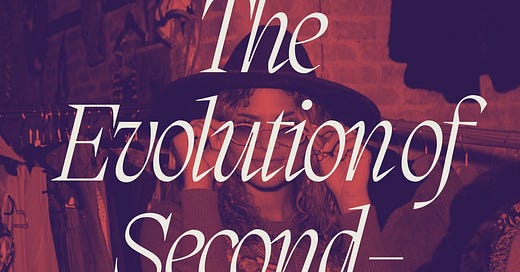




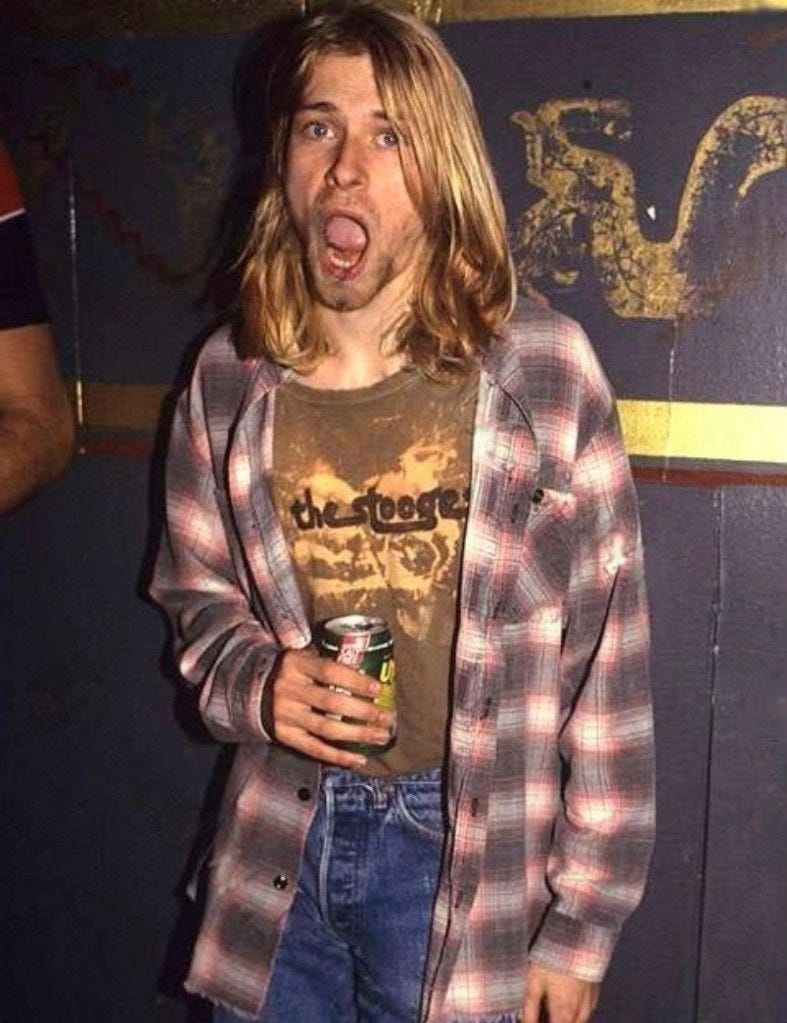
This was really interesting, thank you!
I'm a vintage dealer and from my perspective the huge change in the last five years or so has been the rise of consumer-to-consumer second hand selling. This has led to oversaturation of the second hand market. More and more second hand is sold via apps with a fast fashion mentality, where huge amounts of clothes are being bought and sold, at a fast pace, for very cheap, by individuals who often lack expertise. I sometimes wonder how sustainable any of this really is.